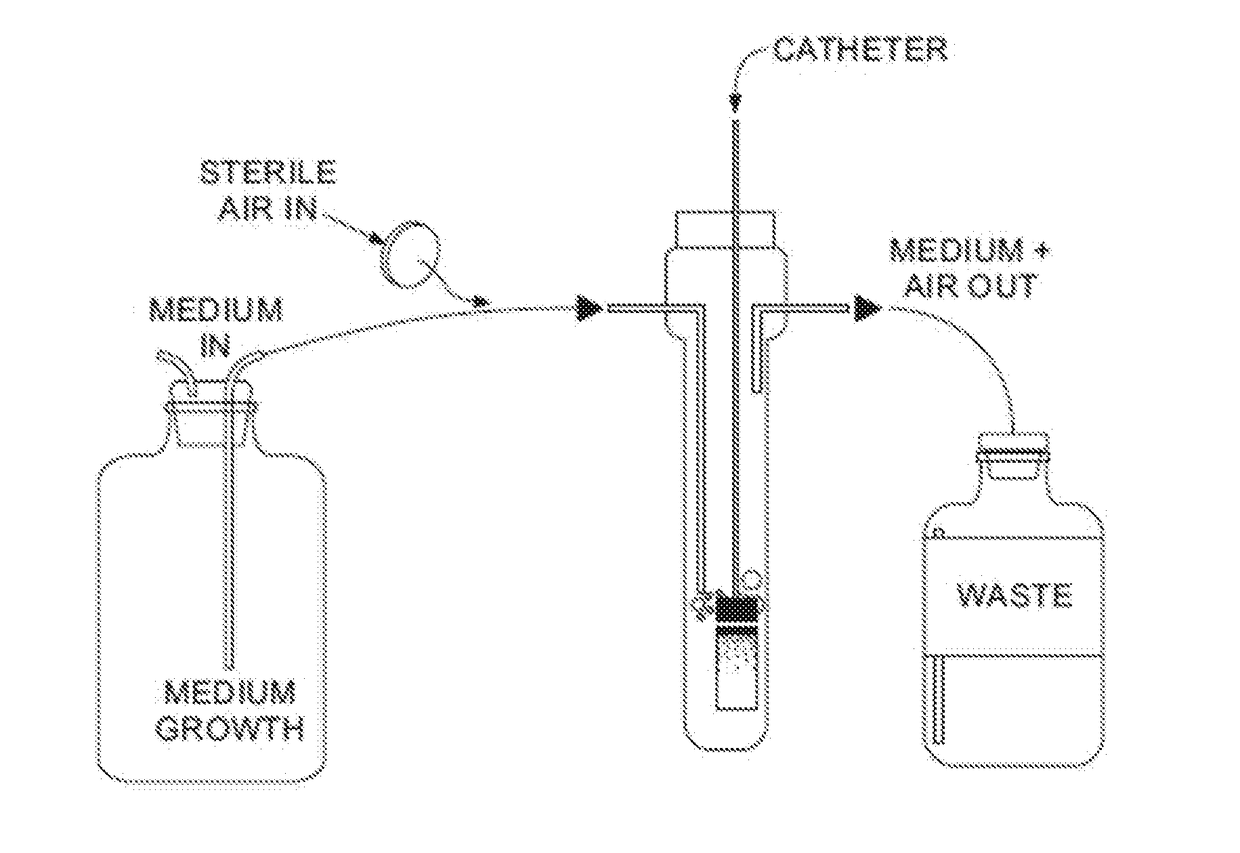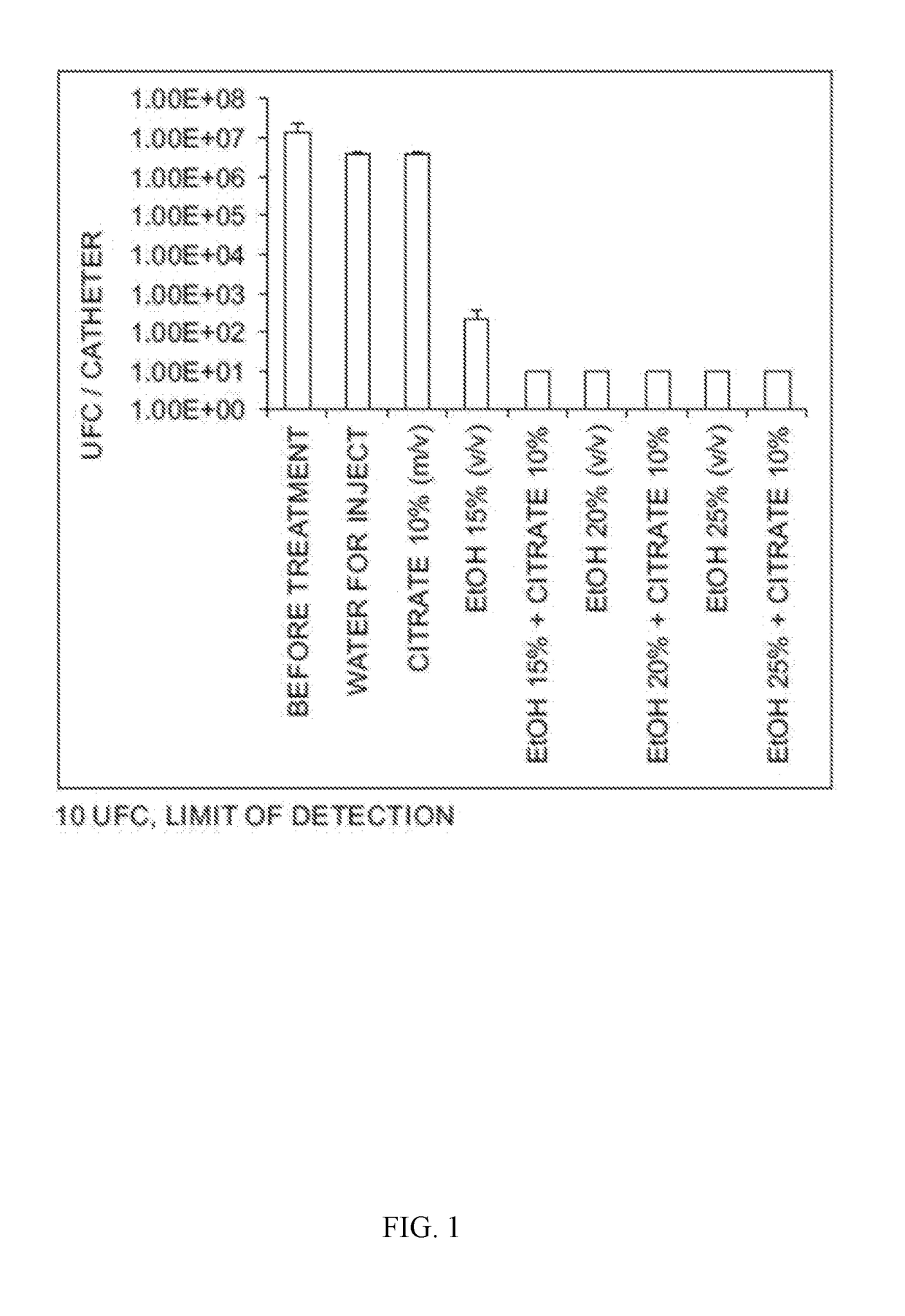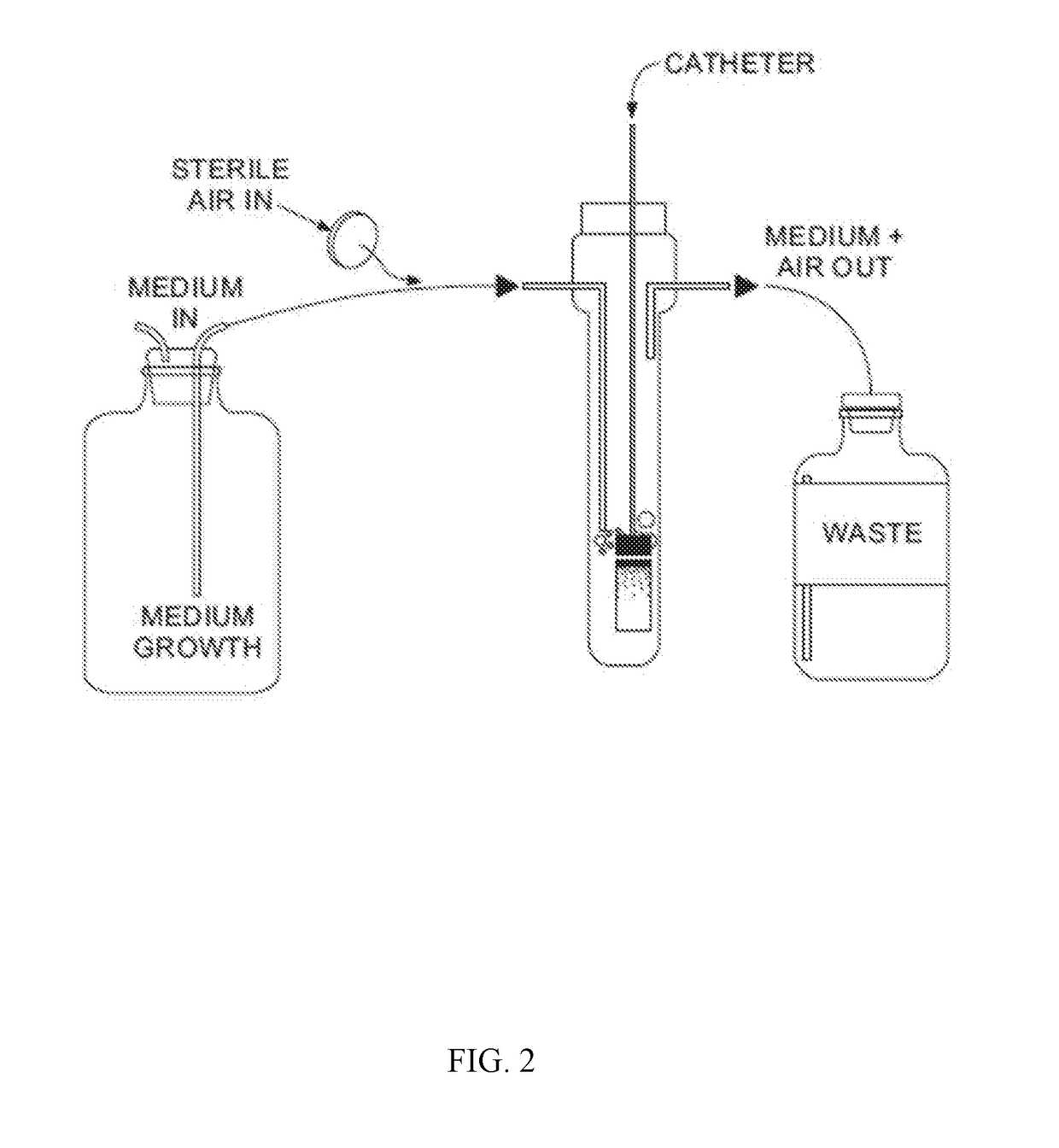Catheter Locking Solution And Catheter Locking Therapy
a technology of locking solution and catheter, which is applied in the direction of water installations, disinfection, construction, etc., can solve the problems of not providing an adequate agent to lyse bacterial cells, and inhibits bacterial cells, and achieves a milder anti-microbial locking solution and a stronger anti-microbial locking solution
- Summary
- Abstract
- Description
- Claims
- Application Information
AI Technical Summary
Benefits of technology
Problems solved by technology
Method used
Image
Examples
example i
[0078]Solutions to be tested:
Ethanol 25% (vol / vol)+trisodium citrate 5%-10% and 15%
Controls: Ethanol 25%, trisodium citrate 5%, trisodium citrate 10%, trisodium citrate 15%, saline
Material to be tested:
Segments (each 1 cm long) of sterile catheters (Chronoflex™, Carbothane™, Silicone, Tecothane™ and Pellethane®).
Strains:
[0079]Staphylococcus epidermidis CIP 68.21
Staphylococcus aureus CIP 65.25 (methicillin resistant)
Pseudomonas aeruginosa ATCC 27853
Klebsiella pneumoniae LM21
Candida albicans SC5314
[0080]Bacterial strains are grown in lysogeny broth (LB) and in minimal medium (M63B1) and the fungal species in 0.67% yeast nitrogen base (Yeast Nitrogen Based (YNB), Difco™) supplemented with 0.4% glucose.
[0081]Measurement of the effect on mature (24 h-old) biofilm
[0082]Biofilms are formed in aerated microfermentors as described in “Natural conjugative plasmids induce bacterial biofilm development.” by Ghigo J M, Nature, 2001 Jul. 26; 412(6845):442-5. These are formed with catheter segment...
example ii
[0085]Solutions to be tested:
Ethanol 25% (vol / vol)+trisodium citrate 5%-10% and 15%
Controls: Ethanol 25%, trisodium citrate 5%, trisodium citrate 10%, trisodium citrate 15%, saline
Material to be tested:
Segments (each 1 centimeterm long) of sterile catheters (Chronoflex™, Carbothane™, Silicone, Tecothane™ and Pellethane®).
Strains:
[0086]Staphylococcus epidermidis CIP 68.21
Staphylococcus aureus CIP 65.25 (methicillin resistant)
Pseudomonas aeruginosa ATCC 27853
Klebsiella pneumoniae LM21
Candida albicans SC5314
[0087]Measurement of the effect on biofilm formation
[0088]Solutions: (i) ethanol at 25%, (ii) trisodium citrate at 5%, 10%, 15%, (iii) Ethanol / Citrate mixing solutions (25%-5%, 25%-10%, 25%-15%) and (iv) 0.9% sodium chloride as control.
[0089]Catheter segments (1 cm long) are introduced into 24-well plates.
[0090]Control and lock solutions are inoculated with bacterial / fungal suspensions to yield a turbidity equivalent to that of a 0.5 McFarland standard (initial densities of 1×106 CF...
PUM
| Property | Measurement | Unit |
|---|---|---|
| length | aaaaa | aaaaa |
| volume | aaaaa | aaaaa |
| time | aaaaa | aaaaa |
Abstract
Description
Claims
Application Information
 Login to View More
Login to View More - R&D
- Intellectual Property
- Life Sciences
- Materials
- Tech Scout
- Unparalleled Data Quality
- Higher Quality Content
- 60% Fewer Hallucinations
Browse by: Latest US Patents, China's latest patents, Technical Efficacy Thesaurus, Application Domain, Technology Topic, Popular Technical Reports.
© 2025 PatSnap. All rights reserved.Legal|Privacy policy|Modern Slavery Act Transparency Statement|Sitemap|About US| Contact US: help@patsnap.com



